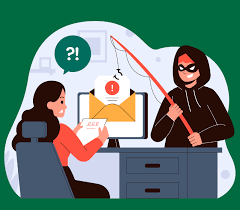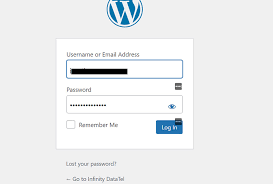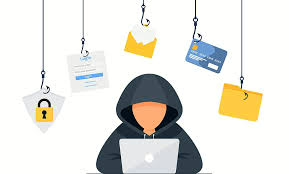One prevalent form of deception is known as Affiliation Fraud or impersonation fraud. In this scenario, con artists pose as trusted figures or organizations, attempting to build credibility and convince unsuspecting individuals or businesses to part with their money.

At BBB, we’ve received reports indicating that these fraudsters have taken it a step further by exploiting our brand’s reputation. They are creating counterfeit Facebook and Instagram profiles, often using photographs and names of our legitimate staff members sourced from our official website. These deceptive accounts claim some connection to BBB, tricking users into believing they are communicating with authentic employees. Once trust is established, these impersonators request an upfront payment under the guise of facilitating investment opportunities. However, once they receive the funds, they vanish without a trace, leaving their victims in despair with no means of recourse.
Another alarming trend involves Recovery Room Scams. Here, fraudsters prey on individuals who have already suffered losses from previous scams. They present themselves as saviours who can recover lost funds for a fee or offer fraudulent investment opportunities. These scammers typically provide vague explanations about their recovery methods, but the harsh reality is that you will likely never see your money again. It is vital to remain vigilant and refrain from engaging with these messages or complying with any demands they make.
Additionally, there’s a trio of tactics known as Phishing, Smishing, and Vishing. These methods involve scammers reaching out via emails, text messages, or phone calls while pretending to be from legitimate companies. Their goal is to extract personal information and financial assets from unsuspecting targets. To protect yourself, avoid clicking on any links provided in suspicious emails, and always verify information by visiting official websites directly.
By staying informed and cautious, you can navigate the digital landscape more safely and protect yourself from these malicious schemes. Remember: awareness is your first line of defence against fraud.
In the vast digital landscape, where communication flows freely, and information is just a click away, there lies a shadowy realm filled with deception and trickery—email scams. As you navigate through your inbox, it’s crucial to remain vigilant and aware of the telltale signs that could indicate a scam lurking within seemingly innocent messages.

Picture this: You receive an email that appears to be from a reputable organization, yet something feels off. The sender’s email address might resemble the real deal, but upon closer inspection, you notice subtle alterations—perhaps an extra letter or a slightly different domain name. This is where your detective instincts kick in. Always verify that the email address aligns with the legitimate entity it claims to represent.
Now, let’s talk about how these scams often greet their targets. Instead of a warm, personalized salutation using your name, they opt for the cold and generic “Dear Customer” or “Dear User.” It’s as if they are casting a wide net, hoping to catch anyone who might bite. In contrast, trustworthy organizations typically invest the effort to personalize their outreach, making you feel valued rather than like just another faceless recipient.
As you read on, you might encounter language designed to evoke urgency or fear—a hallmark of many scams. Phrases warning of immediate account suspension, legal repercussions, or enticing you with fleeting opportunities can send a shiver down your spine. These tactics are crafted to push you into hasty decisions, so take a deep breath and resist the urge to act impulsively.
Perhaps the email goes further by requesting sensitive information—your password or bank details—especially if such requests come out of the blue. This should raise alarm bells in your mind. Reputable organizations would never reach out via email to solicit such confidential data. Your personal information deserves protection, not casual disclosure to strangers lurking behind screens.

As you scrutinize the message, keep an eye out for any spelling and grammatical errors that may jump out at you. A professional organization takes pride in its communications and would hardly allow sloppy mistakes to slip through. If you find glaring errors, consider it a red flag waving frantically in front of you.
Then there are links and attachments—deceptive tools used by scammers to ensnare unsuspecting victims. Before clicking on any link, hover over it to reveal its proper destination. Does it lead to a legitimate website? If uncertainty arises, think twice before proceeding. Attachments present another layer of risk; if they’re unexpected or from unknown sources, it’s best to exercise caution and keep your digital door firmly shut.
And let’s not forget the unsettling requests for money that sometimes pop up in these emails. Whether it’s urging you to wire funds to unfamiliar recipients or asking you to purchase gift cards, these overtures often signal a scam artist at work.
As you piece together the clues, take note of the contact details provided in the email. Do they match what you know of the legitimate organization? Scammers often fabricate fake contact information, so this is a critical step in your investigation.
Lastly, reflect on the overall tone and format of the email. If it deviates from the familiar style you’ve come to expect from that organization, it could be another sign that you’re dealing with a scammer rather than a trusted source.
So, as you sift through your inbox, remember these warning signs. Equip yourself with knowledge and awareness to discern between the genuine and the fraudulent. In this digital age, being informed is your best defence against falling prey to email scams. Stay alert, stay safe!

In the unfortunate event that you find yourself ensnared in the web of fraud, it’s crucial to take swift and decisive action to safeguard your interests. First and foremost, sever all ties with those deceitful individuals who have wronged you. You must refrain from engaging with their messages or phone calls, as any interaction could further complicate matters.
Next, contact your bank without delay. Inform them of your predicament as a fraud victim; they possess the expertise and resources to assist you in recovering your lost funds. Their prompt intervention can make a significant difference in mitigating the impact of the fraud.
If, during this distressing ordeal, you have inadvertently shared sensitive personal information—such as your name, address, date of birth, banking credentials, or even a photograph of your passport—you should seriously consider enrolling in Protective Registration. This proactive measure serves to shield you from potential identity theft, which could arise if fraudsters exploit your details for nefarious purposes. For comprehensive guidance on this protective step, visit the CIFAS website and navigate to the ‘I’m an individual and I need help’ section.

Moreover, it is imperative to report the incident to law enforcement through Action Fraud. Their online service operates around the clock, providing you with a convenient way to document the crime. Simply search for Action Fraud online, or if you prefer a more personal touch, you can call them at 0300 123 2040 on weekdays from 8 a.m. to 8 p.m. Should you be situated in Scotland, direct your concerns to the police by dialling 101.
If you encounter a fraudster on a social media platform, it’s essential to take further action by reporting their profile directly to that platform. These networks take such reports seriously and can help prevent others from falling victim to the same deceitful tactics.
In addition, if you click on any dubious links or are granted access to your computer, it’s wise to activate your antivirus software—if available—and conduct a thorough scan. This can help identify and eliminate any malicious threats that may have infiltrated your system.
Finally, reassess the security of your online accounts. If you suspect that your passwords have been compromised in any way, change them immediately. Taking these measures not only protects you now but also fortifies your defences against future incidents.
If you have encountered fraudsters posing as reputable British entities, remain vigilant and follow these steps diligently to reclaim your peace of mind and restore your sense of security.

Maxthon
In a rapidly evolving digital world where online interactions can shift in an instant, it is crucial to prioritize personal safety while navigating the vast internet. Given the intricate network of connections, choosing a web browser that focuses on security and privacy is vital. Amidst a multitude of competing browsers, the Maxthon Browser emerges as a standout option, effectively tackling these significant concerns without charging its users. This sophisticated browser features an impressive selection of integrated tools, such as a robust ad blocker and various anti-tracking functions—essential components designed to enhance your online privacy.
Maxthon private browser for online privacy
Maxthon has established a distinct presence in the saturated browser market by committing to a user experience that emphasizes safety and confidentiality. With a strong focus on protecting personal data and online activities from numerous potential threats, Maxthon utilizes a range of practical strategies to secure user information. By implementing state-of-the-art encryption methods, this browser guarantees that sensitive data remains safe and confidential during every online venture.
When it comes to improving privacy during your online activities, Maxthon excels. Every element of this browser has been carefully crafted with features aimed at enhancing your privacy. From its efficient ad-blocking functionality to comprehensive anti-tracking solutions and a specialized incognito mode, these tools work together seamlessly to remove disruptive ads and counteract tracking scripts that could interfere with your browsing experience. As a result, users can navigate the internet with greater peace of mind. The incognito mode further amplifies this sense of security, enabling individuals to browse with increased assurance.

